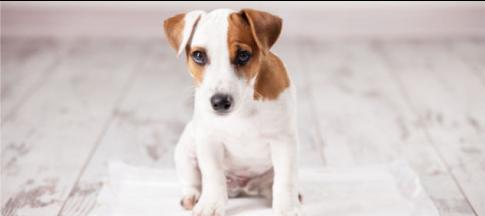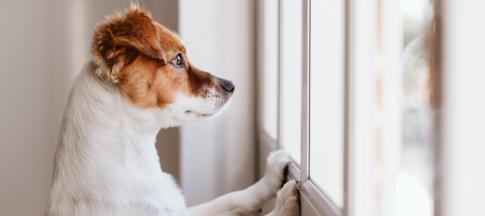Dog crates can be valuable pieces of kit for any dog owner, especially when getting a new puppy, as they can be used to keep a pup safe and secure – but only if you get the training right
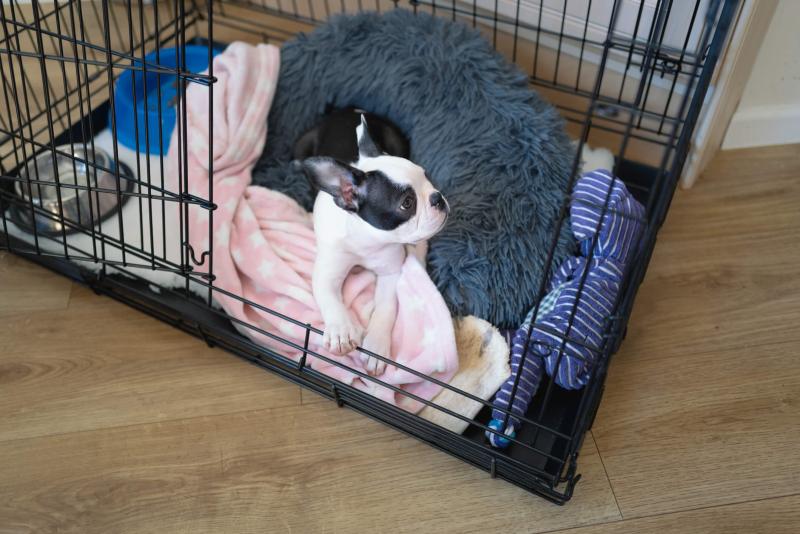
A crate should be your pet’s bedroom and haven to relax, while being somewhere you can put him if you are not able to supervise him for a short while. After all, a puppy in a crate can’t chew your electric cables or go to the toilet in your slippers.
Crates are also a good option for safe travel as you can fit them in the back of your car.
And since dogs naturally tend to avoid relieving themselves where they sleep, crates can really help with toilet training too.
For this to work, though, you need to make sure your puppy has had a chance to go to the toilet before going into the crate and you should take him straight out into the garden whenever you get home and first thing in the morning.
Our written guide will explain more, and we have a video guide below if you'd prefer something visual.
Choosing a crate
It’s important that you choose the right crate for your puppy to ensure that it’s as positive an experience as possible right from the start.
Your puppy will need to be able to stand up, turn around and stretch out in the crate comfortably, so make sure it’s big enough. Pups grow quickly so you may need to get a bigger crate after a few weeks, depending on your dog’s breed.
The majority of crates on the market are made from metal and this is the most durable choice – especially for chewers. Fabric and plastic ones are also available, which make useful lightweight options.
Preparing the crate
You want your pup’s crate to be his bed and safe place, so think carefully about the best location for it. Find a quiet area that is not too hot or cold, and away from the bustle of family life.
To make the crate extra cosy you could cover three sides of it with blankets or towels to reduce the amount of light inside.
You’ll need to put some comfortable bedding in there but make sure it’s easily washable in case of accidents and isn’t easily chewed.
You could also put some boredom-busting puzzle toys in there for your dog to play with.
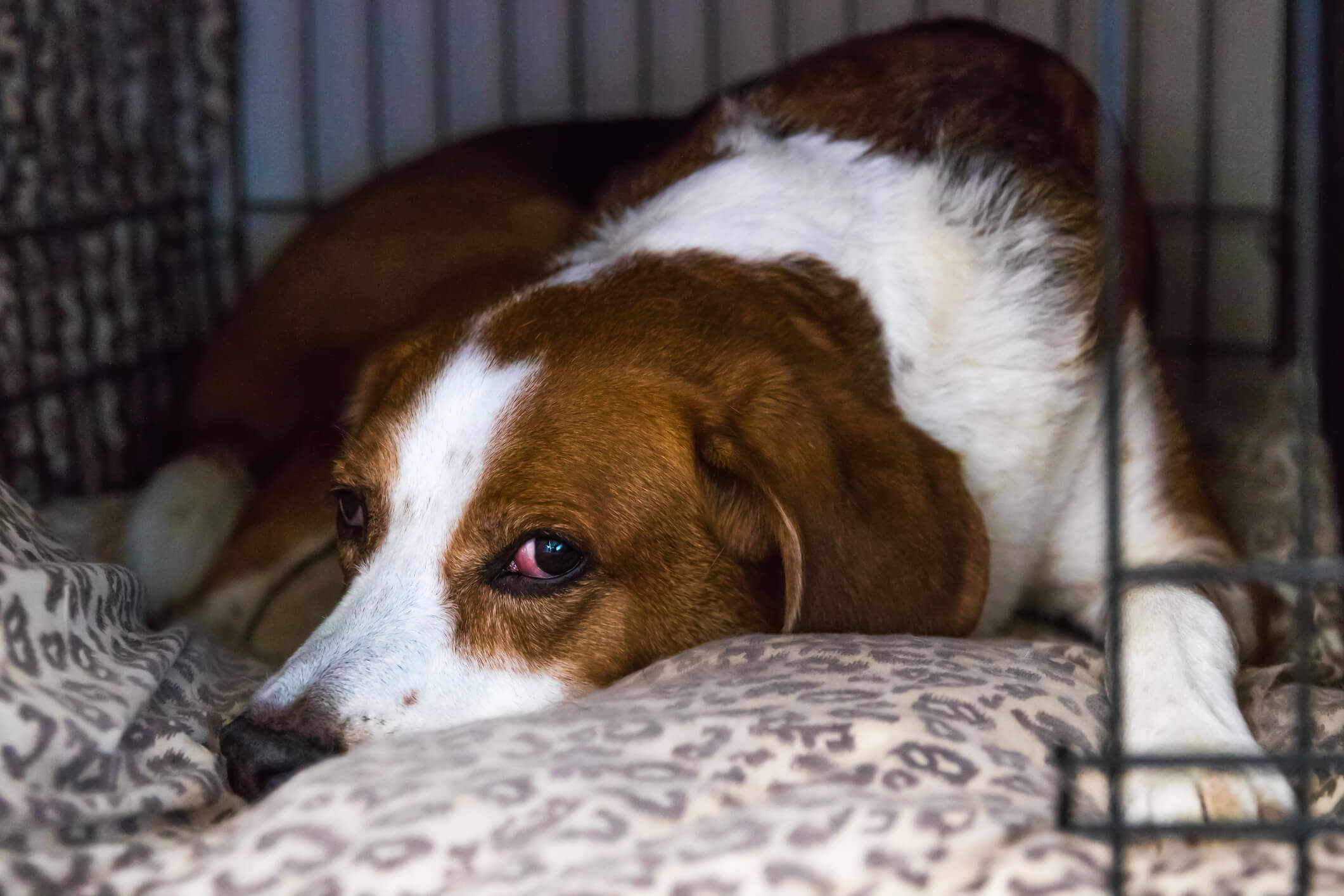
Getting started with crate training
The aim of crate training is to make your dog want to spend time in his crate when he is relaxing or sleeping, and to do this everything you do needs to have positive associations.
If you were to simply push your pup in, shut the door and walk away, your dog would likely associate the experience with feelings of being trapped, alone or scared.
However, if your dog is tired when he goes in and associates it with peaceful, cosy sleep or his dinner, it will be difficult to keep him out!
Remember to keep progress slow and steady. If at any point you spot signs that your dog is unhappy – such as having a low or tucked tail, held back ears or a tense body position – go back a step for a few days until he’s ready to move on.
Step one: get the crate ready
Set the crate up and leave it with the door secured open for your pup to explore.
Step two: add some treats
Put some treats or your dog’s dinner in the crate and let him discover it and eat at his own pace. If your pup is unsure about going in at first, you could try placing a trail of treats leading into the crate for him to follow.
Step three: continue positive reinforcement
Throughout the day, throw the occasional treat or toy into the crate for him to go in and fetch, further reinforcing the crate as a source of pleasure. When your pup goes in, remember to praise him with lots of fuss.
Step four: start using a cue word
Decide on a cue word to use when you want your pup to go into the crate – perhaps ‘crate’ or ‘bed’ – and say the word every time he goes in.
He’ll soon make the association between the cue word and the experience of receiving a treat or praise and will willingly enter when you ask.
Step five: gradually close the door
Once your pup is confidently going in and out of the crate, you can think about starting to close the door.
This has to be done in a careful and controlled way so you don’t spook your pup. Firstly, once your pup is in, close the door partially and feed him a treat through the bars of the door.
You can make this a game and gradually increase the amount of time the door is closed. You could also drop treats or bits of kibble through the top of the crate for him to catch.
Step six: try locking the door
Start locking the crate door for a little while when you’re still in the room and then gradually, over several days, begin to leave the room for short periods, eventually leaving the house altogether.
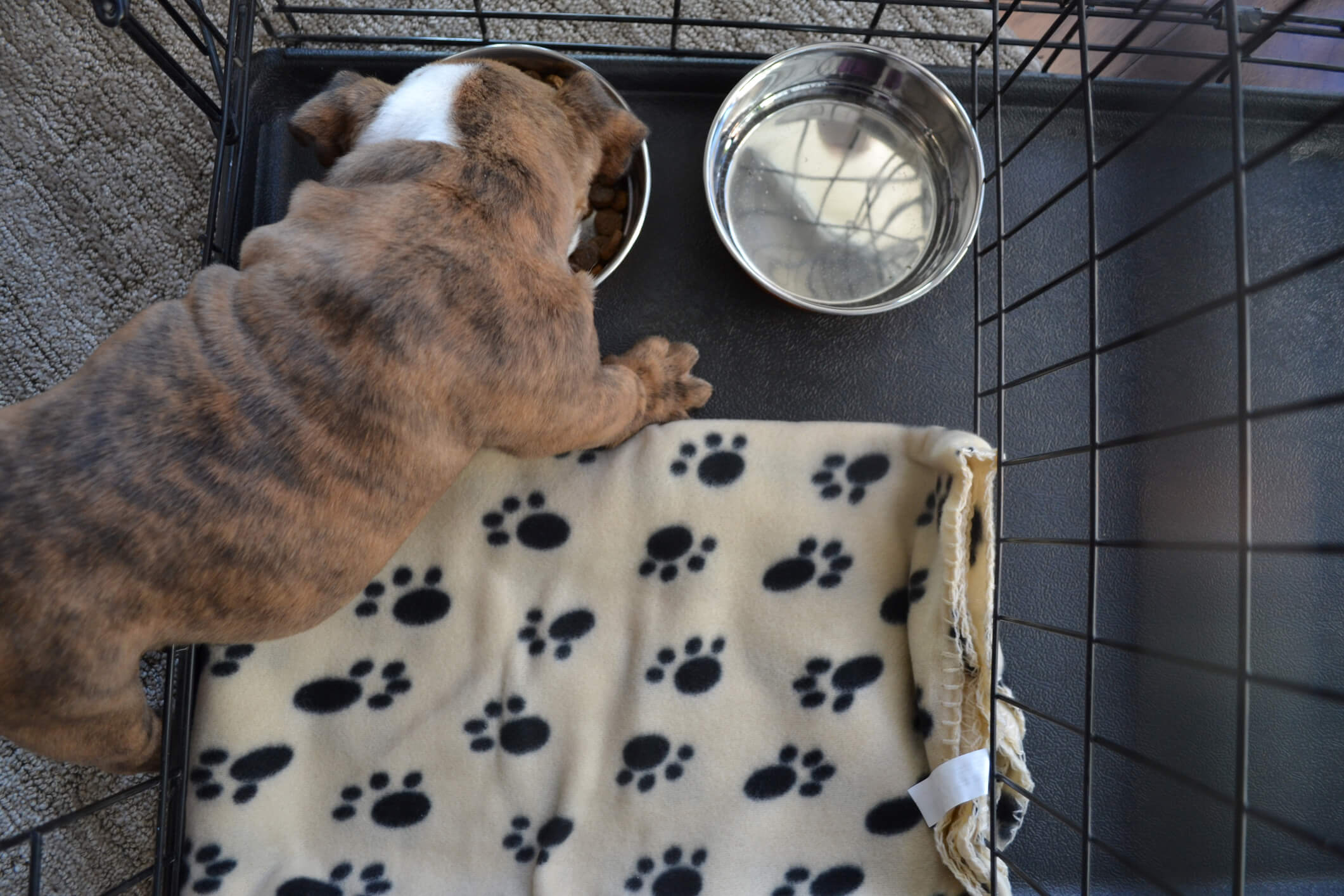
Top tips for successful crate training
- Be patient and consistent with crate training. It can take time but is well worth the effort. Each step needs to be taken slowly as, if you progress too quickly and your dog begins to feel fearful, it can take a long time to reverse the negative associations.
- Don’t just use the crate when you leave the house. Make it accessible at all times so your dog can use it to relax or take some time out. It’s also a handy haven for your dog to seek out if there are visitors to the home that he’s unsure of.
- A crate should never be used as a form of punishment as it will instantly provoke negative associations for your pet and will no longer feel like his safe place.
- Don’t disturb your dog while he’s in the crate, especially if sleeping. He needs to know that it’s his space and that no one is going to encroach on it.
- Don’t leave your dog with anything that he could chew up and choke on, such as bones or toys that could be easily pulled apart. Look for indestructible chews or food toys that are safe to use unsupervised.
- Make sure your dog has access to fresh water at all times. To avoid tipping, opt for a non-spill bowl or one with a hook that can attach to the inside of the crate.
- Giving your dog a long-lasting food toy, such as a stuffed Kong or a lick mat will keep him busy so he won’t even realise you’ve gone. The act of licking actually has a calming effect on dogs so will help prevent anxiety too.
If you need to go out and leave your dog at home for a maximum four hours, you’ll know he’s safe – and your furnishings untouched – if he’s in a crate with the door securely closed.
If you have difficulties crate training your puppy or your pup seems fearful, it’s important you seek advice from your vet or a trainer accredited with the Association of Pet Dog Trainers (ADPT UK) who can help guide you through the process.
I’ve spent 20 years writing about pets and exploring the wonderful relationships they have with their owners. I started as a staff writer on Dogs Today magazine, working my way up to become deputy editor in 2008. In 2010, I left the office to pursue a freelance career, relocated to north Norfolk and started a family.
Over the years I’ve contributed thoughtful human-interest features, celebrity interviews and investigative news stories to publications including The Sunday Times, Dogs Today, Dogs Monthly and Your Cat. I’ve also ghost-written veterinary books and press releases for the pet industry.
When I’m not writing, I enjoy long walks in the Norfolk countryside with my rescue lurcher Popsie. These are always followed by tea and cake.


